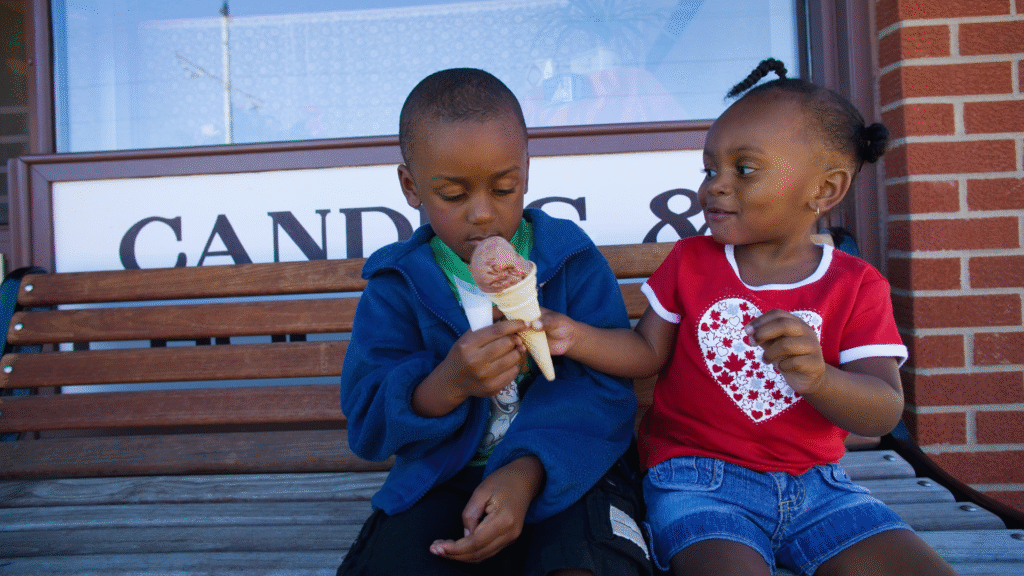Teaching kids empathy and kindness is essential in fostering a compassionate society. By instilling these values early on, children develop stronger relationships and become more resilient individuals. Empathy guides them to understand others’ feelings, while kindness encourages positive interactions and a supportive community.
Parents and educators play a crucial role in modeling empathetic behavior. When children observe acts of kindness and compassion, they are more likely to emulate these actions in their own lives. Simple activities, like discussing feelings or volunteering, can significantly enhance children’s understanding of empathy.
Encouraging open communication about emotions is vital. When children learn to express and acknowledge their feelings, they become more attuned to the emotions of others. This understanding forms the foundation for a kinder, more empathetic generation.
Understanding Empathy and Kindness
Empathy and kindness are essential qualities that contribute significantly to a child’s emotional intelligence. Developing these traits aids in creating compassionate individuals who are better equipped to navigate social interactions and relationships.
The Role of Empathy in Child Development
Empathy is the ability to understand and share the feelings of others. In early childhood, this skill is vital as it lays the foundation for healthy relationships. Research shows that empathetic children often exhibit better social skills and emotional regulation.
Children typically begin to show signs of empathy around age two. They may comfort a crying peer or share toys. Encouraging this behavior reinforces their ability to connect with others emotionally.
Parents and educators can foster empathy through storytelling and role-playing. Discussing characters’ feelings or acting out social scenarios enables children to practice understanding different perspectives.
Defining Kindness for Kids
Kindness involves being considerate and helpful to others. Teaching children what kindness looks like is crucial in promoting positive interactions. This can manifest in simple daily actions, such as sharing, saying thank you, or comforting someone in distress.
It’s important to explain that kindness is an active choice. Encouraging children to perform small acts of kindness reinforces the idea that their actions can have a positive impact on others.
Modeling kind behavior is extremely effective. Children often imitate adults, so when they see kindness in action, they learn its importance.
Cultivating Compassion and Caring Behaviors
Compassion goes beyond empathy; it involves taking action to alleviate another’s distress. Teaching children to be compassionate can start with simple projects, such as helping at a local charity.
Volunteering as a family helps children understand the significance of caring for others. Engaging in discussions about feelings can deepen their emotional understanding.
Encouraging children to express their feelings can also cultivate compassion. When they learn to articulate their emotions, they become more aware of how others might feel. This awareness leads to caring behaviors that benefit both the individual and the community.
Teaching Strategies for Empathy and Kindness
Effective teaching strategies can significantly enhance students’ understanding of empathy and kindness. Educators can implement structured approaches to instill these values within the classroom environment.
Creating a Kindness Curriculum in the Classroom
A kindness curriculum focuses on fostering empathy through structured lessons and activities. Teachers can introduce specific themes each week, such as respect, gratitude, and compassion.
Activities like role-playing can help students practice responding to various social situations.
Incorporating service projects encourages students to engage with their communities, reinforcing the impact of their actions. Leveraging peer feedback can also promote a culture of kindness, allowing students to recognize and appreciate each other’s efforts.
Incorporating Literature and Mindfulness
Literature is a powerful tool for teaching empathy. Selected stories can expose students to diverse perspectives and experiences.
By discussing characters’ feelings and decisions, students learn to recognize emotions in themselves and others.
In addition, mindfulness activities can enhance emotional awareness. Techniques such as guided meditation or reflective journaling allow students to process their thoughts and feelings constructively.
Combining literature discussions with mindfulness encourages deeper empathy and fosters a calm classroom atmosphere.
Fostering Inclusion and Celebrating Diversity
Creating an inclusive classroom is essential for teaching empathy. Educators should promote respect for diverse backgrounds and perspectives.
Activities such as “culture days” can highlight students’ traditions, fostering a sense of belonging.
Group projects can also encourage collaboration among students from different backgrounds, enhancing social bonds.
Providing training for educators on implicit bias can further support an inclusive environment, helping them respond effectively to issues of diversity. This proactive approach cultivates a classroom culture that values every individual.
The Importance of Modeling and Relationships
Modeling empathy and kindness is essential in shaping children’s morals and promoting positive relationships. Both parents and teachers play crucial roles in instilling these values, helping children develop their moral compass and form lasting friendships.
Parenting with Empathy and Kindness
Parents are often the first role models for children. When they demonstrate empathy, children learn to respond to others’ feelings and needs. Simple acts, like actively listening to a child’s concerns or showing compassion in daily interactions, lay the groundwork for empathetic thinking.
By engaging in discussions about feelings, parents can help kids identify emotions in themselves and others. This practice fosters a safe space for children to express their thoughts. It cultivates an environment where kindness is valued, encouraging children to treat their peers with respect and compassion.
Teachers as Role Models for Empathetic Thinking
Teachers influence children’s perspectives on empathy and kindness in educational settings. When educators model these qualities, they help create a classroom atmosphere built on trust and mutual respect. This approach encourages students to adopt similar behaviors.
Effective teachers demonstrate empathetic thinking through active engagement with students. They address conflicts with fairness and teach children how to consider different viewpoints. This guidance is essential for developing strong social skills, allowing students to understand the importance of kindness in their interactions with peers.
Building Friendships on a Foundation of Kindness
Friendships formed on kindness can significantly enhance a child’s social development. When children practice kindness, they are more likely to build meaningful relationships. This foundation not only strengthens bonds but also promotes resilience in facing social challenges.
Encouraging cooperative play and collaborative group activities in various settings helps children learn the value of working together. These experiences teach them to appreciate other perspectives while reinforcing the importance of compassion. In turn, this strengthens their ability to maintain friendships centered on empathy and support.
Practical Activities and Community Involvement
Engaging children in practical activities fosters empathy and kindness while encouraging community involvement. This approach not only builds essential values but also addresses critical social issues like bullying and mental health.
Acts of Kindness and Service Learning
Implementing acts of kindness in daily routines can have a profound impact. Children can participate in community service projects, such as volunteering at local food banks or animal shelters. These opportunities promote teamwork and collaboration.
Moreover, setting up “kindness challenges” encourages them to complete specific acts, like writing encouraging notes to classmates or neighbors. These activities can help children recognize the importance of being compassionate.
Service learning connects community needs with educational goals. Schools might partner with local organizations, creating projects that allow students to address real-world issues while developing empathy and social responsibility.
Creating a Safe Space and Addressing Bullying
Establishing a safe space is crucial for fostering empathy. Schools can implement programs focused on peer mentoring, where older students support younger ones. This structure helps build trust and teaches conflict resolution skills.
Involving children in creating school-wide anti-bullying campaigns empowers them to address issues directly. Workshops can educate them about recognizing bullying and the importance of supporting peers in distress.
Additionally, practicing open communication within these safe spaces encourages children to express feelings and concerns. This approach not only diminishes bullying incidents but also cultivates a caring school environment.
Promoting Mental Health and Gratitude
Integrating mental health awareness into the curriculum can enhance children’s emotional well-being. Schools might offer workshops about stress management techniques, including mindfulness practices.
Promoting gratitude can be an essential part of this effort. Children can maintain gratitude journals, where they regularly note things they appreciate. This practice encourages a positive outlook and fosters empathy towards others.
Involving families in these initiatives strengthens the community bond. Organizing events that focus on mental health, such as family nights with activities centered on emotional support, can reinforce these values outside the classroom.





